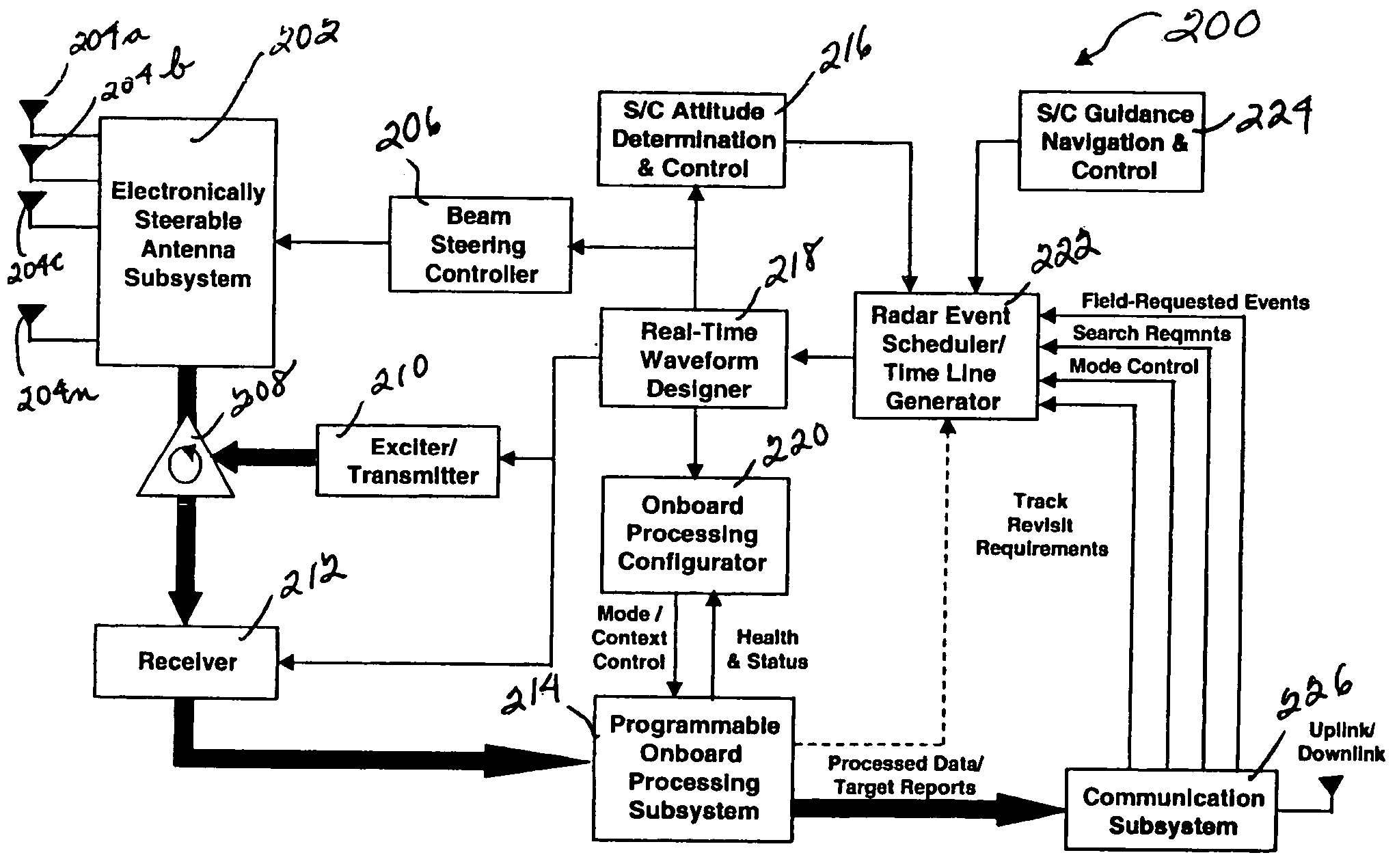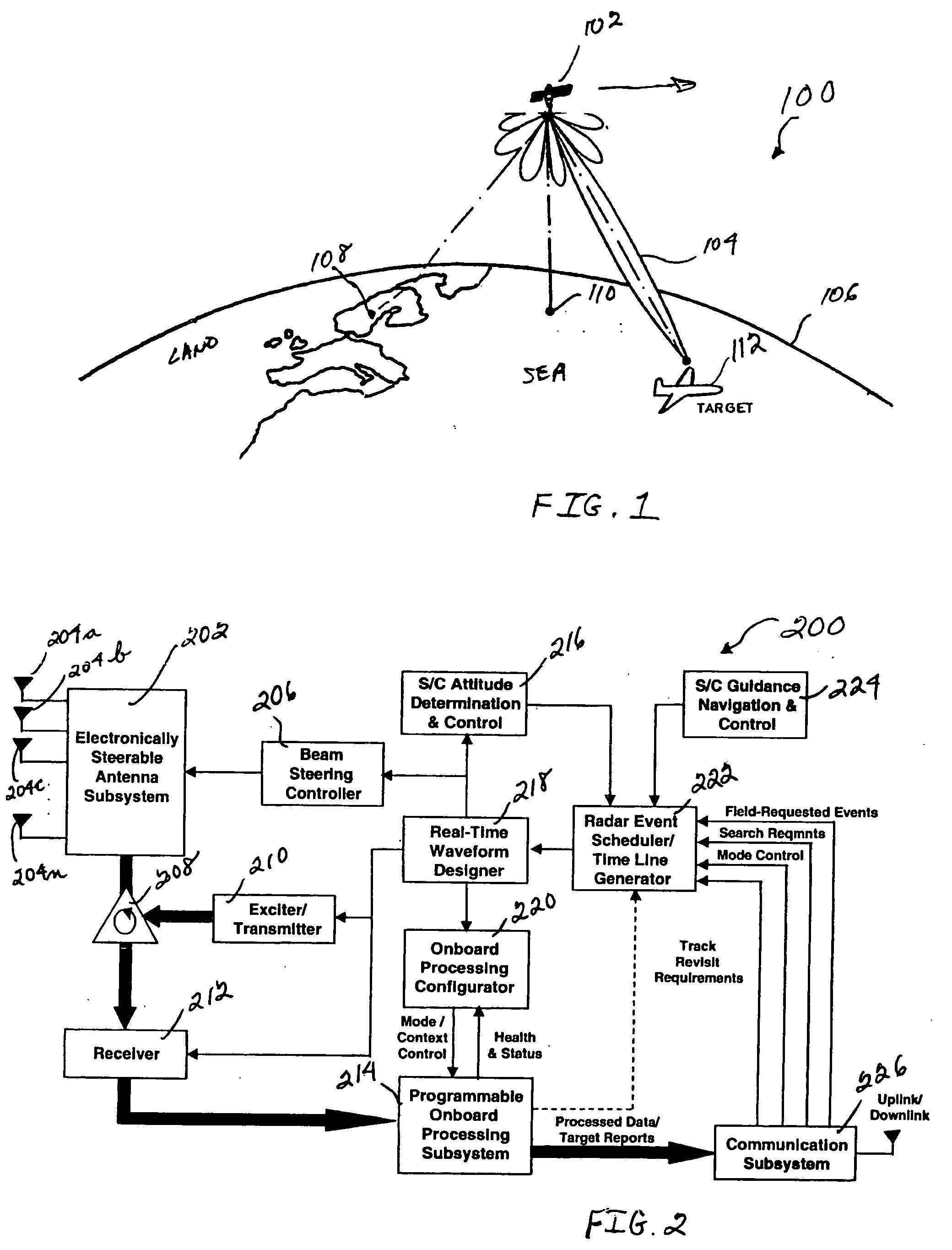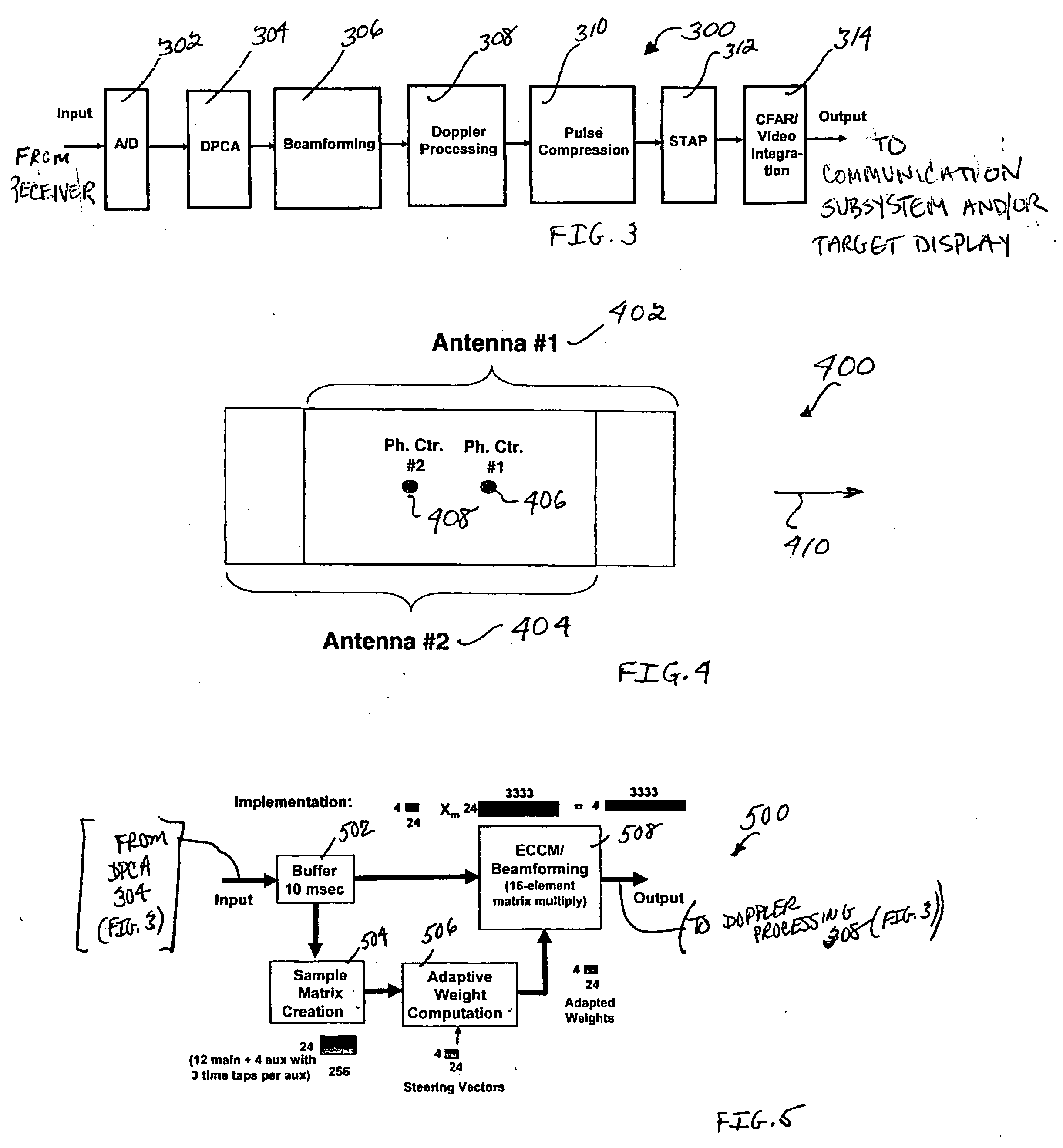System and method for combining displaced phase center antenna and space-time adaptive processing techniques to enhance clutter suppression in radar on moving platforms
a technology of space-time adaptive processing and displaced phase center antenna, which is applied in the field of radar systems, can solve the problems of significant technical problems, affecting the detection of valid, so as to enhance the suppression of clutter and target detection, improve system performance, and process clutter in a more benign environment
- Summary
- Abstract
- Description
- Claims
- Application Information
AI Technical Summary
Benefits of technology
Problems solved by technology
Method used
Image
Examples
Embodiment Construction
[0017] Referring now to the figures, FIG. 1 depicts a pictorial representation of an example of a space-based radar system environment 100, which can be used to illustrate a preferred embodiment of the present invention. For this exemplary embodiment, an MTI radar system 102 is located on a satellite platform that is in orbit over a portion of the Earth 106. The satellite platform for radar system 102 can be in a Highly Elliptical Orbit (HEO), a Medium Earth Orbit (MEO), or a Low Earth Orbit (LEO). Also, radar system 102 can be located on a space-based vehicle or station, such as, for example, a space shuttle or similar space vehicle, space-based laboratory, space station, etc. As such, radar system 102 can be located on any appropriate space-based platform. In any event, although a space-based radar system is described with respect to this embodiment, the present invention is not intended to be so limited, and can include radar systems located on other moving platforms as well, suc...
PUM
 Login to View More
Login to View More Abstract
Description
Claims
Application Information
 Login to View More
Login to View More - R&D
- Intellectual Property
- Life Sciences
- Materials
- Tech Scout
- Unparalleled Data Quality
- Higher Quality Content
- 60% Fewer Hallucinations
Browse by: Latest US Patents, China's latest patents, Technical Efficacy Thesaurus, Application Domain, Technology Topic, Popular Technical Reports.
© 2025 PatSnap. All rights reserved.Legal|Privacy policy|Modern Slavery Act Transparency Statement|Sitemap|About US| Contact US: help@patsnap.com



